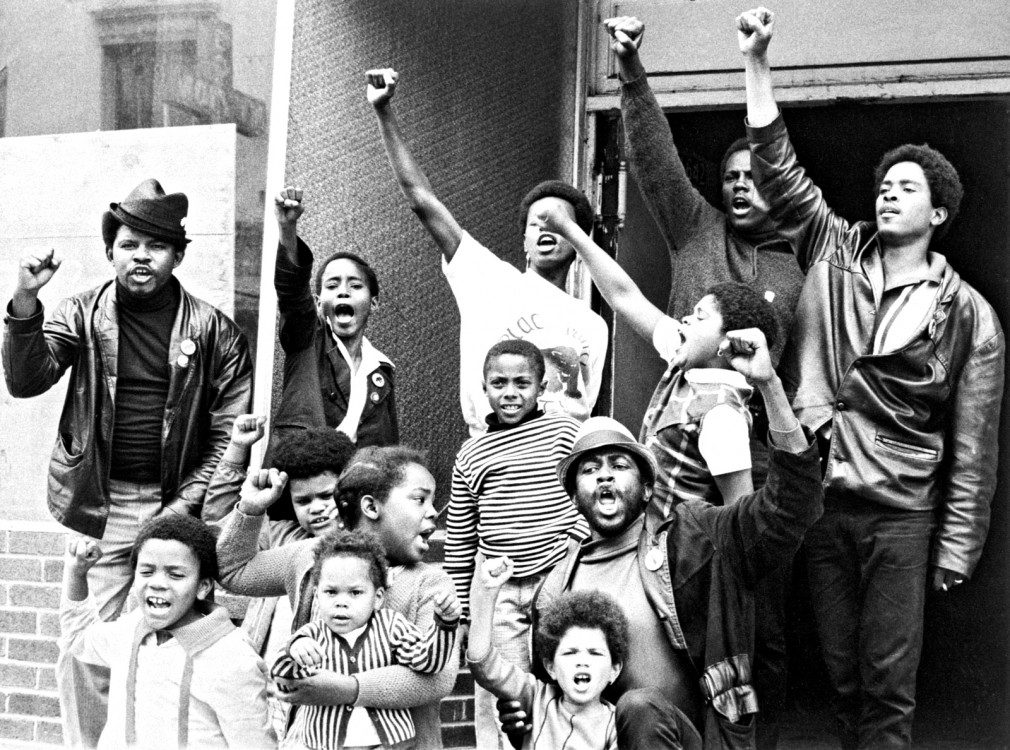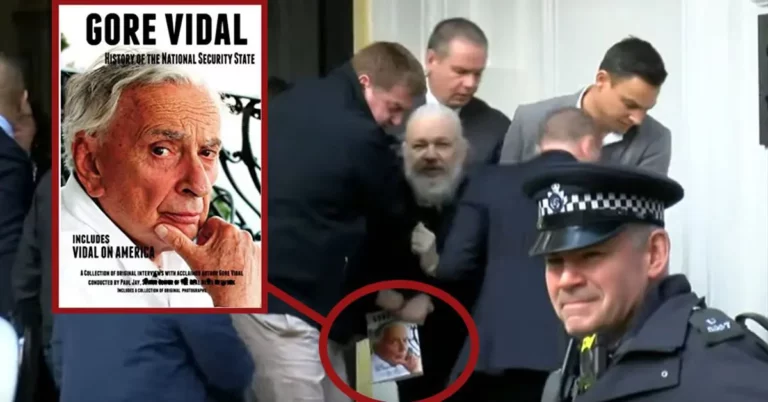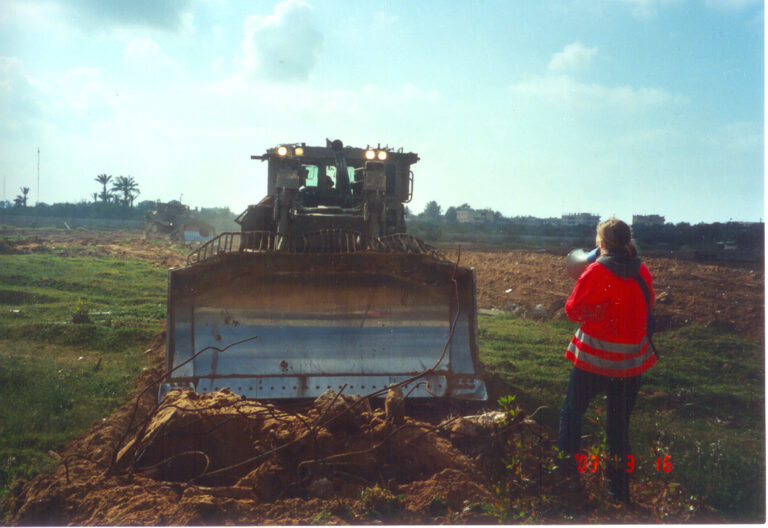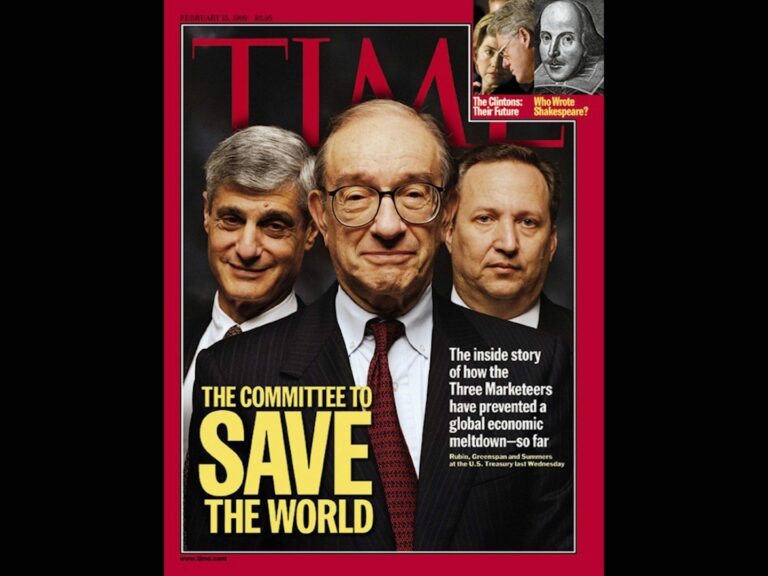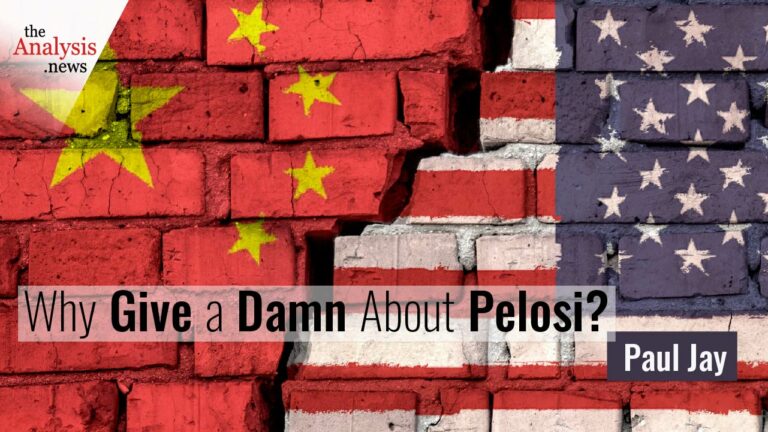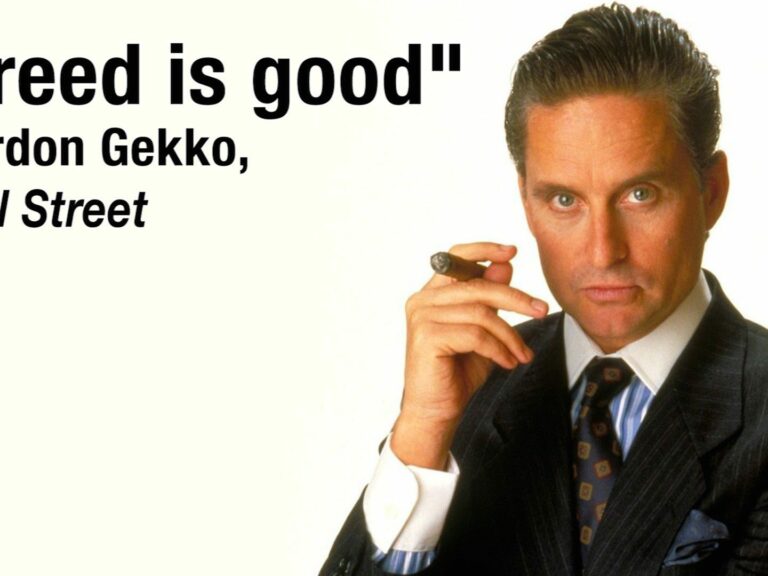“The State Targeted Panthers as Socialists, Not Armed” – Eddie Conway on RAI (4/12)
Mr. Conway says the Panthers were also a threat because they recognized the humanity of and worked with all ethnic groups. This is an episode of Reality Asserts Itself produced on September 14, 2014.
PAUL JAY, SENIOR EDITOR, TRNN: Welcome back to Reality Asserts Itself on The Real News–.
…
Welcome back to Reality Asserts Itself on The Real News Network. We are continuing our discussion with former Black Panther Eddie Conway, who was released six months ago from prison after serving 44 years for supposedly killing a police officer, but a crime that anyone I know that’s look at the situation [would say is] a crime he didn’t commit.
Thanks for joining us.
EDDIE CONWAY, FMR. BLACK PANTHER PARTY MEMBER, BALTIMORE CHAPTER: Okay.
JAY: We’re picking up a conversation about the Panthers and the split that took place. There was a section that wanted to continue and further develop a more militant armed struggle–they called it armed self-defense–and a section that wanted to push more in terms of community organizing, even, I think, had an electoral strategy. Tell us a little bit about it. And where were you in the split?
CONWAY: Well, I sided with Oakland. I was already in prison at that point anyway. I think that probably occurred in ’71, maybe, perhaps, is when that particular split happened, right?
I had always considered organizing in the community, the survival programs, as the way in which we needed to develop support and not only take care of the community, but have the community also take care of us, in terms of helping us create our health clinics, etc. Right?
I think the police certainly had the–COINTELPRO played a key role in creating that split and fomenting violence around the issue, because basically they worked–we had an international–the Black Panther Party at that time had chapters in 37 states, but it also had an international section in Africa, in Algiers. Eldridge Cleaver was there, Kathleen Cleaver was there, a number of our people were there. We were working with the PLO at the time. There was a European section in Scandinavia. And I think the Panthers that were out of the country, some of them were being trained by the PLO, some of them were out of the country for various reasons, either wanted or they fled arrest, etc. Some of them were out of the country as the results of airplane hijacking and that kind of stuff. And I think that group that was out of the country was–in interacting with the PLO and interacting with other guerrilla groups in Africa, became more radicalized in terms of armed struggle, the necessity for armed struggle here in America.
And then the assassination of some of our key members kind of aggravated that whole situation. We had key members assassinated in L.A, we had key members assassinated in Illinois, we had key members assassinated in New York. And the people out of the country that were advocating armed warfare was looking at that as a need to respond to that kind of stuff.
JAY: What do you think was the role of COINTELPRO, the police infiltration, in terms of this?
CONWAY: Well, they did–one, they did the assassinations. I mean, they were directly involved in the assassination in L.A. with our key leaders. They end up being sued and end up paying $2 million for their involvement in the assassination of Fred Hampton and our Illinois leaders.
JAY: Yeah, shot in his bed while he’s sleeping.
CONWAY: Yeah. Yeah. And they end up had to pay $1.8 million to the survivors because it was proven that the government had actually violated the civil rights of everybody.
JAY: Do you think the police were–the infiltrators, agents provocateurs types, do you think there were pushing Panthers towards a more armed position to help rationalize these kinds of attacks?
CONWAY: They were goading, pushing this, probably.
JAY: [crosstalk]
CONWAY: Yeah. One particular case in Illinois, say, O’Neal–William O’Neal was his name. The federal agents made phone calls to the Blackstone Rangers, which at the time was a street organization with about 5,000 members. The leader was named Jeff Fort. They made phone calls to him saying that the Panthers’ Fred Hampton, say, which was in charge of the Panthers at that time, which only could have been a few hundred strong at best, but had really strong community support, that Fred Hampton had ordered a hit on Jeff Fort because he wanted to take over the Blackstone Rangers. They in turn, the FBI agents, that is–and this all in the COINTELPRO papers–called Fred Hampton and said that the Blackstone Rangers was going to wipe out the Panthers because they had some concern that they was taking over their community. This agent provocateur, Williams–William O’Neal was his name–actually shot off a pistol in a gathering in which there were Blackstone Rangers and Panthers and tried to trigger a shootout among both groups, right? And, of course, this was discovered later, and it was just by the skin of the teeth that there was no violence and no incident. But there was this kind of deliberate agitation and aggravation among different groups to cause warfare, to cause people to shoot each other, and they played a key role in that, and they played a role in the letters that went back and forth from Algiers to Oakland to New York, poison pen letters that was threatening–Huey was threatening Cleaver; Cleaver was threatening Huey. And all of this stuff was going on. None of this was happening, but the mail made it seem like it was happening.
JAY: Yeah, the police were writing these letters, putting them in the names of different people.
CONWAY: Yeah. They were writing the letters and they were putting names on it, and they were suggesting that this was happening or that was happening and so on. And it created a sense of paranoia. And then at some point it created actually a hostility and conflict, and people end up getting shot or killed as a result of some of this stuff. In some cases they actually had their agents up in Northern California–say, for instance, a key finance member of the Black Panther Party in California–Fred Bennett was his name–was assassinated up in one of the guerrilla training camps up in Santa Monica somewhere, directly as agitation from an FBI agent–Tom /ˈmɛtsər/ [Tom Mosher (?)] was his name, right? And he reported that he had this guy killed. And /dʒɒniˈkɑr/ [Jimmy Carr (?)], which was–and I don’t want to get too complicated here, but [Jimmy Carr], which was George Jackson’s lieutenant, right, ended up getting assassinated as a result of them putting records–putting files in his prison records that wasn’t real, that inferred that he was a snitch and he was informing. And then they dropped a note in and people went and investigated and found these records inside–he’s snitching. And he ended up getting assassinated.
JAY: I mean, partly what you thought then, but also what you think now, assessing the situation, what is the relationship, do you think, between armed self-defense, community organizing, and what happened there? I mean, certainly what electrified people about the Panthers wasn’t just the breakfast program. It was the fact that they took up this banner of armed self-defense. If it had been just the breakfast program, it probably wouldn’t have had the same impact that it did. On the other hand, it was such a threat to the state that it brought on an enormous assault. So what was right or wrong about it? I mean, how does this–.
CONWAY: Well, there’s three things that’s got to be factored in here. First, there were other armed self-defense groups all over America–the American Nazi Party, the Ku Klux Klan, the states’ right parties, white supremacy, all kinds of militant white groups all around America, armed, openly carrying arms.
JAY: But they don’t threaten the status quo the way armed black people do.
CONWAY: They don’t, because they weren’t black. So black was one of the key factors that was frightening. But also having a philosophy of socialism was also a factor that was very frightening, because the example the Black Panther Party set in its socialist programs was a threat to the structure of capitalism in America, and in the world, in fact. So that was scary.
The other thing was the ability of the–because there were other armed black groups. There were black self-defense groups all over the black community. But it was only the Panthers that were working with white groups and that was working with Mexicans and that was working with Puerto Ricans and that was working with the American Indians and that was working with the Asians. And all of those different groups imitated the Black Panther Party and their thing. The Brown Berets, they armed theirself to protect their community, and the American Indian movement, or what we call “red beret”, they did the same thing. The Young Lords, they did the same thing. And the White Panthers, which people don’t even probably even know exist, they did the same thing. But other white–the White Patriot Party, other groups did the same thing. They armed theirself and used the Black Panther Party as a template to do programs in their communities. That was the threat, the threat of all of these different people from all of these different communities working together.
JAY: The Panthers could become the core of a revolutionary movement.
CONWAY: Yeah. And so that was a threat.
And it is those three things, pretty much, that created the kind of reaction that made the government say, well, okay, we need to destroy this organization.
JAY: When you look back, could that have been avoided? And what I mean by that, I mean the amount of infiltration, the amount of–the way they were able to get such factional fighting going. Did the armed–I know a lot of the kind of more adventurous armed actions were encouraged by the cops, but might there have been away to prevent that?
CONWAY: Well, looking back with hindsight from where I sit right now, I don’t think it would have been possible to stop the destruction of the Black Panther Party. Historically, if you look back all the way back to slavery, say, for instance, any time there had ever been any organized black activities just for human rights, just for recognition of peoplehood, there has always been an concerted effort, either through the community or through the government, to destroy whether it was the maroon communities or whether it was a black community, Wall Street, say, for instance, in Oklahoma, whatever–or Rosewood; you name it–community that stood up and declared that they were humans and they needed to be treated like other human beings and they was going to take care of theirself, those communities were always destroyed.
I think all the efforts historically in America has been that white supremacy have organized to destroy any real effort for black people to gain power and gain control over their community, because there’s an economic relationship that means that if black people gain power and gain control of their community, white people don’t get the benefit from that.
JAY: Well, so it’s sold, anyway, I mean, so it’s sold it to sections of the white working class.
CONWAY: Yeah, and that’s true, because I’m really talking about the ruling class and I’m not talking about–because it is that divide and conquer that keeps us from working together.
JAY: I mean, they’ve been selling this to white workers since the American Revolution, that all whites are in the same boat.
CONWAY: Yeah.
JAY: But they’re not.
CONWAY: And I guess we have to say institutional racism and white supremacy has allowed segments of the white population to enjoy creature comforts and material advances as a result of the oppression of people of color.
JAY: Especially globally.
CONWAY: Yeah. Whether you’re talking about the universities or whether you’re talking about just opportunities, you know, or whether you’re talking about who controls the fire department, there is a relationship for oppression and there’s a relationship–even though white supremacy is being controlled and used by a small segment and directed by a small segment of people for their own benefit, economic benefit, it still benefits a large portion of the population in order to make it a viable ideology.
JAY: Yeah. Looking back, was it a mistake to take up armed self-defense? I’m not making–I’m not at all meaning a moral issue. From a tactical/strategic issue, was it almost a little–I can’t say–I don’t think the correct word is naive, but was there some feeling that [if] the state, at least, maybe even at the federal level, had a little liberalness to this, there would be such a vicious assault? ‘Cause, like, if you knew there was going to be such a vicious reaction–and I wonder if there wasn’t some of that even spilled over from the civil rights movement, in the sense that, you know, the Kennedys helped a little bit, getting people out of jail. We’ve interviewed Bob Moses, and he’s talked about how the Kennedys actually did get them out of jail when they were down organizing in the South, and they certainly postured that they were for desegregation and such. Was there an underestimation of just how vicious the reaction would be, and thus a kind of mistake?
CONWAY: Obviously it was a mistake. Obviously in hindsight we can see it was a mistake. But I think it was a calculated risk that both Huey and Bobby and other people took when they realized that in order to organize in the black community, you had to have the ability to protect yourself, because up until that point, when you look at black organizers, you see bodies hanging on trees, you see bodies in the Mississippi River with engine blocks on them, you see bodies being burned in houses and buildings. Organizers, black organizers, have always been subjected to violence and have been subjected to white supremacy and have been killed, and had been killed whether you were talking about a Malcolm X or whether you were talking about a Martin Luther King. Whether you’re talking about somebody that was, like, peaceful and nonviolent and they were just riding a bus down the interstate, they were always being attacked, they were being killed, they were being abused. And at some point people said, well, okay, if we’re going to organize, at least let’s up the stakes. If you’re going to kill us, you’re going to kill us fighting back. And I think that was a calculation that was correct at the time.
But it was a miscalculation in the sense that we had no idea the threat exists because we were international socialists, not because we were armed. The threat exists because we were willing to work with people across all the different ethnic groups. That was the threat. The armed thing never was a threat. The amount, the number of Panthers was never a threat. You know, you’re talking a few thousand, you know, maybe several thousand and so on, and you’re talking maybe a support base of maybe a hundred or two hundred thousand.
JAY: Well, was it a mistake to have a socialist agenda?
CONWAY: Well, no, it wasn’t a mistake. We just didn’t realize how dangerous that was. The reaction is the same reaction that’s against–that’s causing them right now to boycott Cuba 60 years later. It’s the same reaction that caused them to not recognize China for 25 years. It’s the same reaction that created the Iron Curtain. There was–and I don’t even want to say it’s white supremacy as much as this is the ruling class reacts vigorously to anything that will talk about economic democracy, leveling the playing field, taking care of everybody. In other words, I can’t have this gold mine, I can’t have this diamond mine, I can’t have this island, I can’t have this yacht–we’re going to kill you all or we’re going to choke you all to death until you’re all gone, because this island is mine, this yacht is mine, this land is mine, etc. That reaction was toward socialism, as opposed [to] toward the gun, because there was all kinds of groups in America, black, white, red, and so on, that were armed, but it was only those groups that were talking socialism that was attacked and destroyed.
JAY: And nothing’s more threatening than if African Americans get organized and around that becomes a whole movement to take away those yachts and those islands and that privilege.
CONWAY: Yeah, and that was the–and to do it in such a way in which you recognize the humanity of whites, poor whites, you recognize the humanity of Puerto Ricans, you recognize the humanity of the Native American, you recognize the humanity of the Asian Americans, etc. That was the threat, that they would all–they were all working together, they all came together. It was that idea that was more threatening than carrying those weapons.
…
JAY: Thanks for joining us.
We’re going to continue our series of discussions with Eddie Conway and pick up the conversation about the greatest threat. Thanks for joining us on Reality Asserts Itself on The Real News Network.
…
JAY: Thanks for joining us.
CONWAY: Mhm.
JAY: And thank you for joining us. We’ll pick up and continue our conversation with Eddie Conway on Reality Asserts Itself, and we’ll talk more about the greatest threat. Thanks for joining us.
“Marshall “Eddie” Conway was an American black nationalist who was a leading member of the Baltimore chapter of the Black Panther Party who in 1971 was convicted of murder of a police officer a year earlier, in a trial with many irregularities.”
